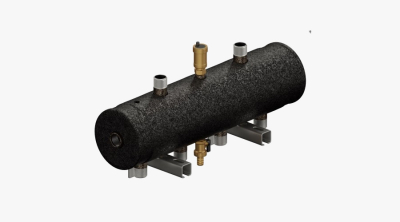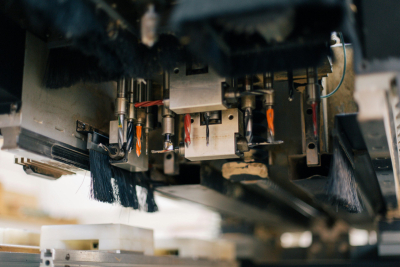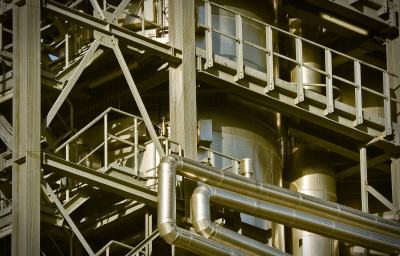The global stainless steel market is vast and continuously expanding, driven by increasing demand in sectors such as automotive, construction, and manufacturing. Within this context, roll steel is indispensable, as it ensures the efficient and cost-effective production of stainless steel sheets, coils, and other forms. These products, in turn, are crucial for creating high-quality, durable end products that meet market demands.
Understanding the role of roll steel in this market is vital for industry stakeholders, as it impacts production efficiency, product quality, and ultimately, the competitiveness of stainless steel producers on a global scale. As the market evolves, innovations in roll steel technology are likely to shape the future of stainless steel manufacturing, making it an area of significant interest and importance.
Roll steel manufacturing process
The manufacturing process of roll steel is complex and requires precision at every stage. It begins with the selection of high-quality raw materials, such as iron ore, which are then melted in a furnace to create molten steel. This molten steel is then cast into slabs, which are subsequently processed in rolling mills. The rolling process involves multiple stages, each designed to achieve specific thicknesses and properties.
In hot rolling, the steel slabs are heated to a high temperature before being passed through the rolls. This process allows the steel to be shaped and thinned while retaining its ductility. Hot rolling is typically used for producing larger, thicker pieces of stainless steel. On the other hand, cold rolling occurs at or near room temperature, resulting in a smoother surface finish and more precise dimensions. Cold-rolled steel is often used in applications where appearance and precision are crucial.
The rolling process not only determines the final shape and thickness of the steel but also influences its mechanical properties, such as strength and flexibility. This makes the choice of rolling techniques critical in the production of stainless steel products that need to meet specific performance criteria. The ability to control these variables allows manufacturers to produce steel that is tailor-made for different applications, from industrial machinery to consumer goods.
Impact of roll steel on stainless steel quality
The quality of stainless steel is heavily influenced by the roll steel process, as it determines the material’s structural integrity and surface finish. During rolling, the steel undergoes mechanical deformation, which aligns the metal's grain structure in a way that enhances its strength and durability. This is particularly important for stainless steel, which is used in environments where resistance to corrosion and high mechanical stress are essential.
Surface finish is another critical aspect impacted by roll steel. The rolling process can produce a variety of surface textures, ranging from rough to mirror-like finishes, depending on the application. For instance, a smoother surface is often required for stainless steel used in consumer products, such as kitchen appliances, where aesthetics are important. In contrast, industrial applications might prioritize strength over appearance.
Moreover, the consistency and uniformity achieved through advanced rolling techniques help in maintaining high quality across large production volumes. This is crucial for industries where even minor defects can lead to significant operational issues or product failures. As such, the roll steel process is a key factor in ensuring that stainless steel products meet the rigorous standards demanded by global markets.
Market dynamics influencing roll steel production
The production of roll steel is closely linked to global economic trends, technological advancements, and market demands. One of the primary factors influencing roll steel production is the fluctuating price of raw materials, such as iron ore and nickel. These price changes can significantly impact the cost of producing stainless steel, leading to adjustments in production volumes and pricing strategies.
Technological advancements also play a crucial role in the evolution of roll steel production. Innovations in rolling mill technology, such as automation and precision control, have allowed manufacturers to produce higher-quality steel with greater efficiency. These advancements have enabled producers to meet the increasing demand for specialized stainless steel products in sectors like automotive and aerospace.
Additionally, the growing emphasis on sustainability and environmental responsibility is shaping the roll steel industry. Manufacturers are increasingly adopting eco-friendly practices, such as recycling and reducing energy consumption during production. This shift not only helps in lowering the environmental impact of stainless steel production but also meets the rising consumer demand for sustainable products.
Challenges facing the roll steel industry
Despite its critical role in the stainless steel market, the roll steel industry faces several challenges that could impact its future growth. One of the primary challenges is the volatility of raw material prices, which can lead to fluctuations in production costs and profitability. This unpredictability makes it difficult for manufacturers to plan long-term investments and production strategies.
Another significant challenge is the need for continuous innovation to stay competitive in the global market. As new materials and technologies emerge, traditional roll steel processes must evolve to keep pace with industry demands. This requires significant investment in research and development, as well as the adoption of new technologies that can enhance production efficiency and product quality.
The industry is also grappling with environmental regulations and the push towards sustainability. While there is a growing demand for eco-friendly products, meeting these demands often requires costly changes to existing production processes. Balancing the need for sustainability with the requirement to maintain competitive pricing is a complex challenge that the roll steel industry must navigate carefully.
The future of roll steel in the stainless steel market
Looking ahead, the future of roll steel in the global stainless steel market appears promising, with several trends likely to shape its evolution. The ongoing demand for high-quality, durable stainless steel products in industries such as construction, transportation, and consumer goods is expected to drive growth in roll steel production. Additionally, the continued development of new technologies will enhance the efficiency and quality of roll steel processes, further solidifying its role in the market.
Sustainability will also play an increasingly important role in the future of roll steel. As environmental concerns continue to rise, manufacturers will need to adopt more sustainable practices, such as reducing carbon emissions and increasing the use of recycled materials. These efforts will not only help in meeting regulatory requirements but also cater to the growing consumer demand for eco-friendly products.
Moreover, globalization and the expansion of emerging markets present new opportunities for the roll steel industry. As developing economies invest in infrastructure and industrialization, the demand for stainless steel products is likely to increase, driving further growth in roll steel production. To capitalize on these opportunities, manufacturers will need to stay agile and responsive to changing market dynamics, ensuring they can meet the evolving needs of a global customer base.
Conclusion: the vital role of roll steel
In conclusion, roll steel plays a vital role in the global stainless steel market, serving as the backbone of production processes that meet diverse industrial needs. From the precision of the manufacturing process to the impact on stainless steel quality, roll steel is central to ensuring that stainless steel products meet the rigorous standards of today’s markets - https://rollsteel.eu.
The industry faces challenges, including raw material volatility, the need for continuous innovation, and the push towards sustainability. However, with the ongoing advancements in technology and a focus on sustainability, the roll steel industry is well-positioned to continue its crucial role in the global stainless steel market.
As the market evolves, the role of roll steel will undoubtedly remain integral, ensuring that stainless steel continues to be a cornerstone of modern industry, from infrastructure to consumer products. The future of roll steel is one of growth, innovation, and adaptation to the ever-changing demands of the global economy.








